The Elderly – Today’s Behavior Comes from the Past
| The way people think, the way they behave, the goals that they have and how they go about achieving them are the products of attitudes, values and beliefs learned as children. Many are a reaction to situations experienced in the past. Unless an individual consciously sees a need to change them they become part of their persona. In aging, the ability to maintain that persona with its power, independence, control etc., becomes more difficult. It is then that new behaviors may develop that are not understood by the younger people around. For example it is common to see in long term care facilities a behavior called hoarding. This is seen in the collecting of food, toilet rolls or pencils etc. and hiding them. Tracing the individual’s history may show that when young they lived through the depression era of the 1920’s and 1930s; they had lived in war torn areas where homes and possessions were lost. They may have spent years starving and searching for food, clothes and shelter to feel secure. Today any feeling of insecurity may bring back that fear and the old behavior becomes part of today’s drama. During the Second World War those in concentration camps were stripped and shaved and gassed to death in shower rooms. They were victims of medical experiments, forced labour and lived amid disease and starvation. Holocaust survivors relive those memories and behave accordingly when today’s situation triggers the past. Traditionally healthcare providers – doctors, nurses, social workers, rehabilitation professionals, personal support workers and attendant care providers – all those who work with the elderly, are younger than those for whom they care. They may have no knowledge of their past. It may come as a complete shock to the professional when the elderly person has a catastrophic reaction to being examined naked, being wheeled into a shower room, being talked to in a loud voice or being woken up suddenly. All triggers to bring past traumas to the surface. Perhaps the situations mentioned are more obvious as we are increasing more aware of post traumatic stress syndrome in modern soldiers returning from wars zones. TV and movie dramas have included many stories of vets having flashbacks. However there is another group whose trauma is less documented and the implications of the impact of their childhood experiences less researched. Numbered amongst today’s elderly are those who were disabled pre/post natal or in childhood. In the past most died young. But today there are many seniors who experienced hospital and institutional care from the 1930s -1950s with conditions such as Cerebral Palsy, Spina Bifida, Polio and Bovine Tuberculosis. Now as they succumb to other diseases of aging or deterioration of preexisting conditions they are having severe reactions to hospital treatment or placement in long term care facilities. Many deny that they are losing independence, many refuse to accept help from technical aids. Many resist intervention with anger. Many show what seems to be irrational fear when needing assistance. Is something from the past being triggered? A look at the values, attitudes and beliefs common in Europe and North America in the era when these individuals were growing up gives us the key to today’s problem. 1 A work ethic prevailed that said salvation comes from working hard and that rewards from life came from working. 2. Conformity. You had to fit in and not be conspicuous by being different. 3. You should not show your vulnerability. This meant you had to hide your weakness, win at all costs. In this environment then, the disabled and those unable to work were to bring shame, pity and humiliation to the family. When possible those with physical, mental and intellectual disabilities were hidden away in institutions or rehabilitated to “pass” as normal. Some of those who couldn’t “pass” and couldn’t work did find employment in freak shows at fairs. In Ontario Canada the best freak show of the 1930s was viewing the Dionne Quintuplets where 6,000 people would travel great distances each day to see them. President Roosevelt was always seen standing or seated hiding the fact that he wore leg braces to stand and used a wheelchair. It was felt that the American people would not feel safe in the hands of a cripple. Little value was placed on the lives and worth of a person with a disability. Their professional caregivers were also underpaid and under appreciated. There is evidence of systemic abuse. In hind sight we call it abuse. In those days physical, emotional, verbal and sexual abuse was common in environments of low self esteem and when the belief system saw the vulnerable person as not whole. This has also been seen in residential Aboriginal schools and so on. Many adults, because of childhood disabilities or being considered different, were brought up to believe that they were without value, god’s punishment, the work of the devil, a mistake, a burden, the cause of all the family problems and had brought shame to the family. They weren’t even considered human, but freaks. Many live with that burden today and live out the victim role, continuing to accept abuse. Many, however, accepted the challenge facing them and despite their limitations excelled and are accomplished citizens. Many despite severe limitations chose to experience the joy of being alive and have given much joy to those who care for them. Some, like many minorities who are oppressed, have struggled to a position of power from where they have become the oppressor. Others have from an early age denied or repressed the memories of abuse but slowly as they age and become less independent the suppressed fears and emotions resurface. When being told they need help with bathing, they can’t walk safely and must use a wheelchair or they can no longer live independently and must go into a long term care facility – all the past suppressed feelings emerge. The professional must understand where their client is coming from. They must validate the origin of the fear. They must bend over backwards to offer choices and options so that the client can feel they are making their own decisions. Wholeness can be attained when there is empowerment. The professional should avoid harsh words or language that is perceived as threatening – after all this will only reinforce that the past is alive and well today. Respect was something rarely shown a person with a disability in the past. It would be worth showing now if trust is expected and you need risk taking from them. Rather than reacting defensively when confronted by unexpected responses to your statements, ask yourself what does the behavior you are witnessing mean? Do you know if it was triggered by some past memory? Are the assumptions you are making – making matters worse? Spend time learning the truth now. Both your futures depend on it. |







